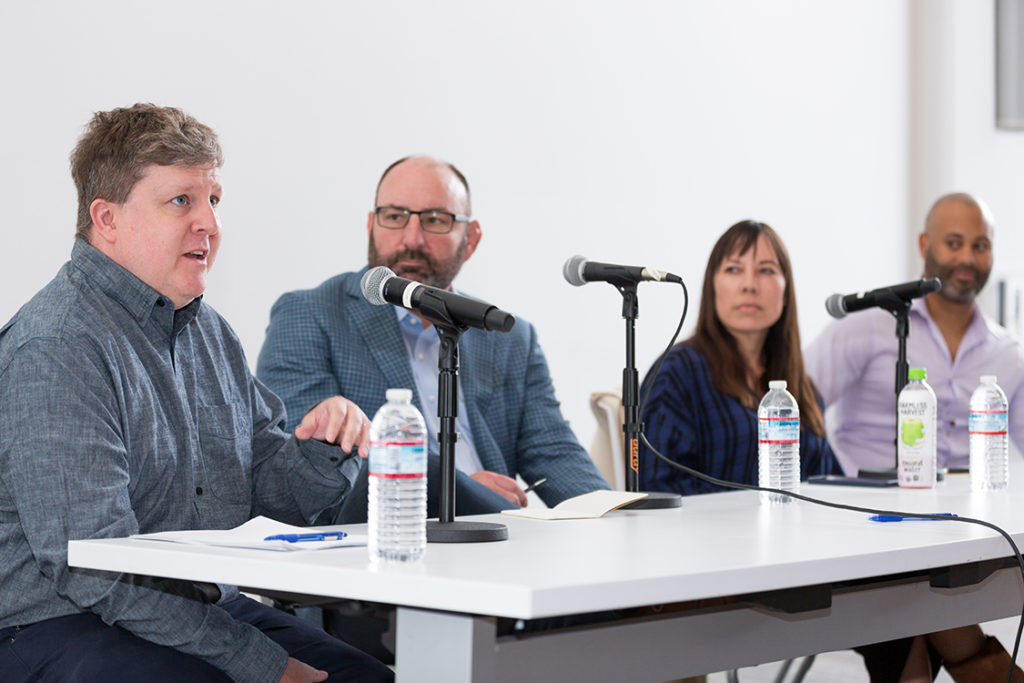
When communicating information on a mass scale in fields like public relations, marketing, and advertising, having a diverse perspective is crucial prior to launching any campaign. The LMU Communication Studies Department has been actively seeking to cultivate student curiosity about the social world by bringing awareness to which voices are being heard or silenced with the aim of promoting diversity in storytelling across the industry.
As part of this goal, CMST hosted an event this spring with a panel of invited experts from the Santa Monica-based advertising agency RPA, who spoke about the evolving faces, voices and responsibilities of public relations as it relates to diversity and advocacy. The event was co-hosted by Christopher Finlay, associate professor of communication studies and Carol Costello, interim director for LMU’s Center for Media and Just Society.
Costello kicked off the conversation with some startling statistics, citing that “according to the Association of National Advertisers in 2020, 3% of chief marketing officers were Black, 5% Asian and 4% Latino.” Panelist Phil Irvine, RPA’s vice president of audience intelligence, lamented this fact, and described how historical barriers have prevented diverse candidates and leaders from entering the advertising industry. “I think we have to make a shift toward broadening the types of professional backgrounds that companies recruit from, in order to bring more diverse leaders into the marketing and advertising industry.
“When you have this skillset, you can use it to promote whatever you care about. Whatever you put energy into can become manifest on a very big scale.”
Sarah Bates, vice president of creative direction at RPA
And the need for increased diversity could be considered particularly acute in an industry with the power to foment social change on a massive scale. Sarah Bates, vice president of creative direction at RPA described the power of working in advertising, likening the profession to being a speaker phone for causes that matter, pointing to a personal project that led to the first single-use plastic bag ban in the country. The moment represented an environmental sea change. “When you have this skillset, you can use it to promote whatever you care about. Whatever you put energy into can become manifest on a very big scale.”
“It’s immensely empowering to see yourself on a broad scale and I think the more we see ourselves, the more everybody feels like this is normal,” said Bates. “It can move society forward much more quickly. I think in the last ten years, the advertising industry has evolved by fifty years. To keep this momentum, it’s important to prioritize having young and culturally-attuned creative teams.”

Communication studies major and public relations minor, LaTamarra Gates particularly liked that the panel addressed the misconception that marketing and advertising are directed towards certain demographics. “It was eye-opening to realize that advertisers are actually creating ads based on what we’re doing rather than who we are, which is a great way to go about it,” Gates said. “It’s not like advertisers are tracking our name or a portfolio, they’re paying attention to what we’re doing and our online behavior.”
Gates also said that she agreed when RPA executive vice president and chief operating officer Pete Imwalle explained people’s motivations for supporting a brand. “My favorite part of the discussion today was when Pete said that when you make it about the product, nobody cares because people don’t really care about products anymore. They care about people and they care about each other. Our generation of Millennials and Gen Z want to support brands that care about people and not just their bottom line.”
Craig Rich, associate professor and chair of the communication studies, said he was heartened to hear RPA mention data analytics as a valuable skill in communication. Rich said the communication studies faculty have been working on integrating more data analysis into the curriculum. “At this point have access to such incredible amount of data, that to have the ability to analyze it, understand it, and tell a story with it is such a valuable skill that our students need to have as they move into the modern job market.”



